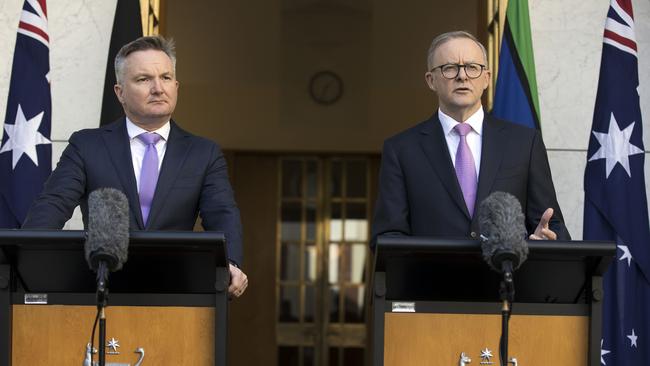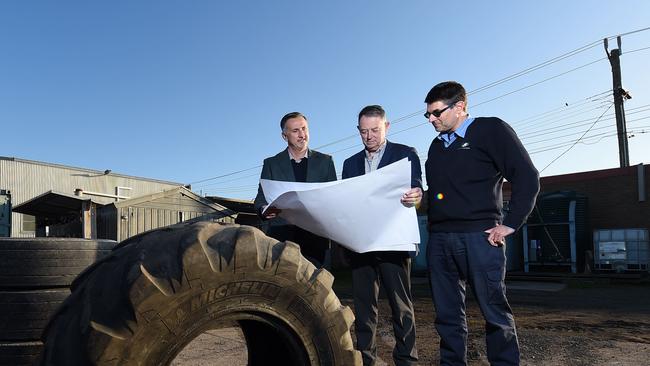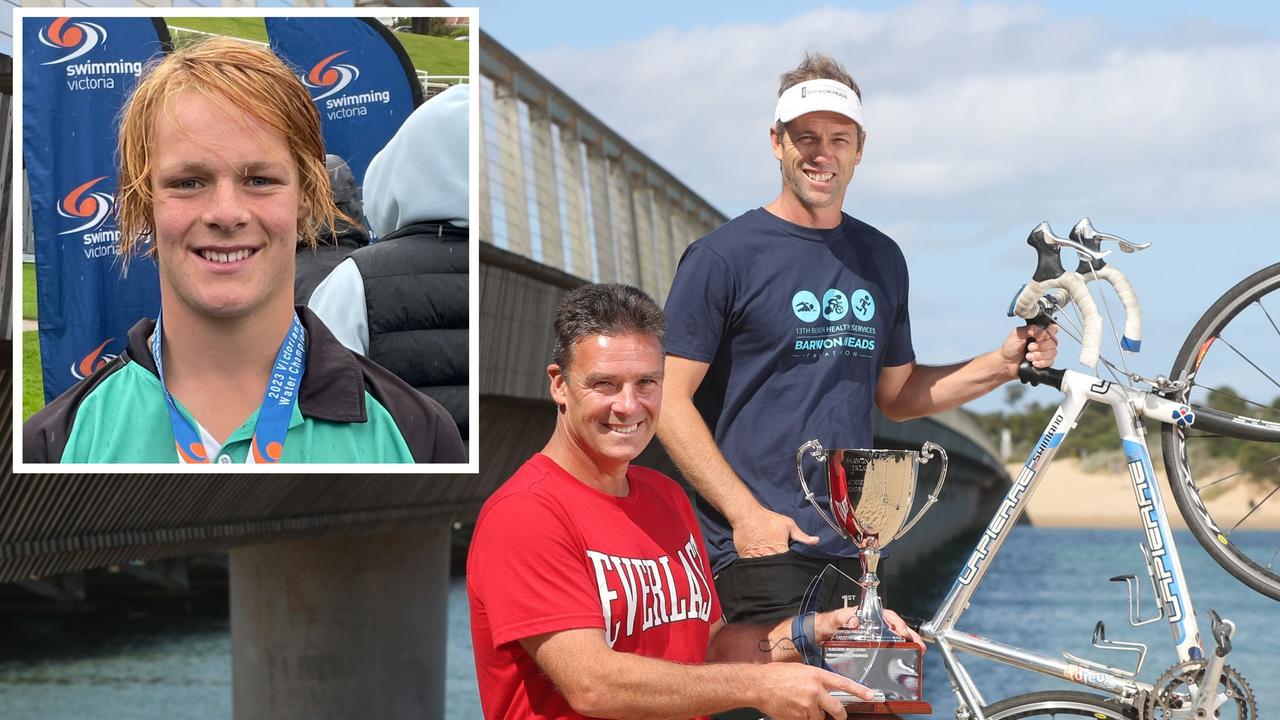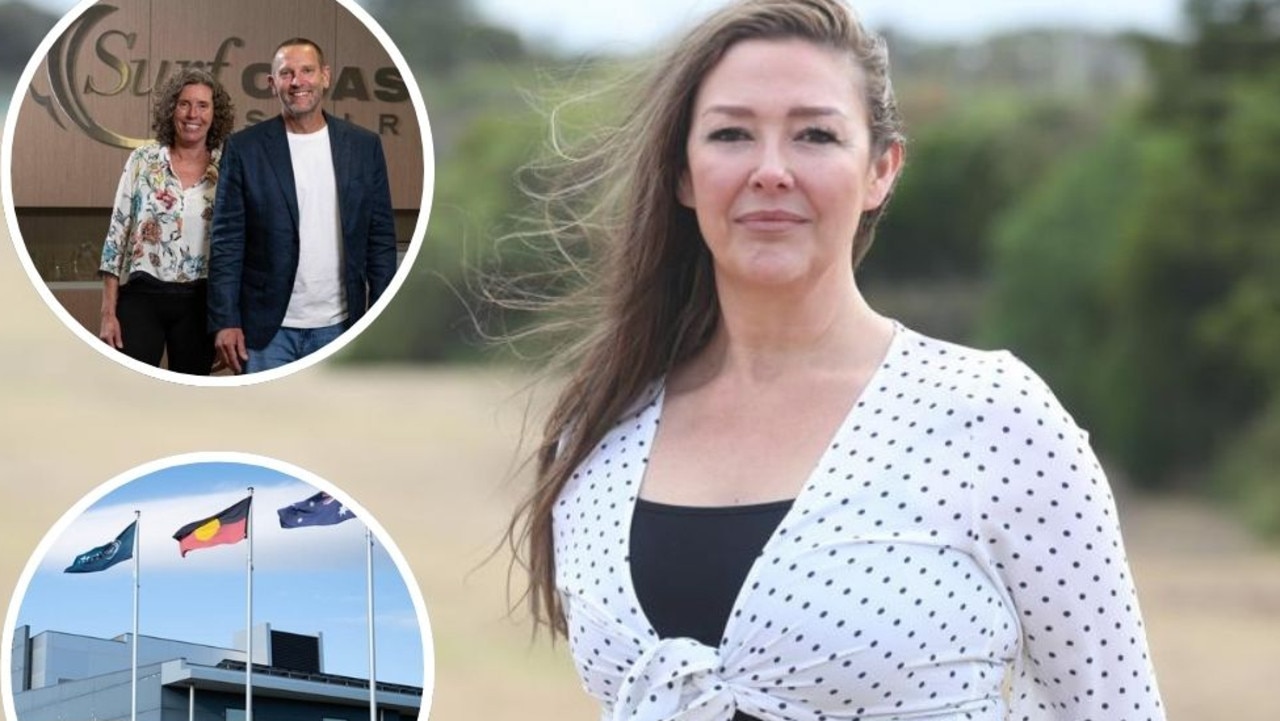‘In our DNA’: How Geelong could lead the clean energy revolution
The region’s manufacturing history could position it as a leader in the fight for renewable energy, key industry people have revealed.
Geelong
Don't miss out on the headlines from Geelong. Followed categories will be added to My News.
Geelong’s manufacturing past is embedded in the city’s identity.
Once one of the largest hubs in Australia, key local leaders say the city’s adaptable history could now holds the key to its future.
According to a report by Ironbark Sustainability released last year, the region could grow more than 24,000 new green energy jobs in sectors ranging from renewable energy generation, manufacturing and electric transport in just five years.
More than half of those jobs were across construction and renewable energy and its transmission.

Geelong – whose role as a central hub for shipping and rail in the 1860s earned the nickname the Pivot City – could be on the cusp of its next big industrial leap.
Earlier this week the Federal Government locked in support to put Australia on track by a 43 per cent emissions reduction by 2030, with Climate Change Minister Chris Bowen making it clear the legislation was a “floor, not a ceiling” for reductions.
“This legislation is sending the message and I’m delighted that business and renewable groups and climate groups have welcomed so strongly the indications this will now pass the parliament,” he said earlier this week.”
Labor’s Powering Australia policy also outlined a plan to boost the share of renewables in the National Energy Market to 82 per cent.

G21 CEO Giulia Baggio said the region’s manufacturing history put it in prime position to take a leading role in the transition to renewables.
“It’s in the city’s DNA,” she said.
“Geelong has a very deep, long history of industry and manufacturing.”
“We’ve already undergone the transition out of heavy manufacturing 10-15 years ago, so the city knows how to transition into new industry.”
A number of green projects like Moorabool’s big battery are already underway, while a massive wind farm at Rokewood has been approved by the state government.
An expanding investment at Deakin University has led the way for a $50m trailblazer fund to help develop green manufacturing and the development of new and sustainable technology at the university’s Geelong Future Economy Precinct.
Deakin research innovation executive director Ross Mahon said the future economy precinct could create up to 2000 jobs within 10 years.
“We will create significant new technologies that will position Deakin and Geelong for the future as well as creating significant employment within the area,” he said.
Clean Energy Resources, which partnered with Deakin, is working to divert waste from landfill with a “mission to process waste with zero emissions”.
With new technology, the company will take end-of-life tyres, put them through a re-gasification process where it can create hydrogen and baseload electricity.

“CER harnesses a range of existing and proven technologies from around the world to deliver a methodology that is completely closed loop, recirculates and re-uses gases that would normally escape as part of the process,” director Steve Horvat told the Addy.
“We are able to achieve our vision of zero emissions, zero waste, zero landfill and 100% reusable, beneficial by-products.”
With the company looking to expand into municipal waste, Mr Mahon said a Geelong solution could wind up helping many international communities.
“It’s dealing with a huge issue for Australia, because we can no longer export end-of-life tyres offshore, and stockpiling them has created tyre fires in the past,” Mr Mahon said.
“And it’s only a stepping stone for this company, because the next thing that they want to address after that is commingled plastic waste.”
The City of Greater Geelong last year committed to net zero emissions by 2035, with its climate plan aiming for a “a zero-emissions, climate-ready city and region”.
Surf Coast, Colac-Otway and Golden Plains Shires and the Borough of Queenscliffe have also implemented similar strategies.
At a community level, Geelong Sustainability helped kickstart feasibility studies for community batteries and set up a revolving fund to help businesses cut energy bills and reduce emissions.

A number of major regional players have announced plans to invest in hydrogen.
A Geelong hydrogen technology cluster was announced last year as part of a national network aimed at establishing Australia as a global leader.
Last year GeelongPort announced plans for a $100 million green hydrogen production and distribution hub, while Viva Energy presented plans for the nation’s first commercial, green hydrogen vehicle refuelling station.
“Our truck fleets in Australia pretty much run on diesel,” Ms Baggio said.
“Converting that to green hydrogen will really cut a lot of emissions out of the atmosphere, and we’ve already got a lot of major players working on it.
With the region in a prime position to take advantage of new technologies, local leaders have called for more clarity and assistance in the transition to clean energy.
For Geelong Sustainability president Vicki Perrett, the push to renewable energy must be inclusive and affordable for everyone.
“The focus must be to decarbonise, localise and equalise,” she said.
“Our region does have home homeowners and householders that are at a significant disadvantage, and this must be a transition for everyone.”
Ms Perrett called on the federal government to provide a cohesive national plan for transitioning the nation forward in an equitable manner.
“A bit like the National cabinet got together and planned during Covid, that needs to continue on the energy front,” she said.
“We need a nationwide approach.”
Sentiments were echoed by Ms Baggio, who said greater investment in the market needed to feature a blend of government and private sector contributions.
“That’s the framework that’s a bit weak at the moment,” she said.
“We’ve been looking for that national direction that really gives certainty and investment into driving clean energy markets nationally.
When you look at our region, which has all the pieces we need to put together, a national framework will help all of that come together much more quickly and open the gate to international players who might be looking for opportunities here as well.”
Government efforts to rewire Australia’s national energy grid were also seen as crucial.
With Australia’s climate targets almost locked and loaded, Ms Perrett said the time to cut emissions is now.
“We’re halfway through 2022,” she said.
“We have got to be at least halving our missions this decade, and that they’re not going down at all, so there’s a lot of work to be done.”
Climate Change Minister Chris Bowen was contacted for comment.
Originally published as ‘In our DNA’: How Geelong could lead the clean energy revolution





